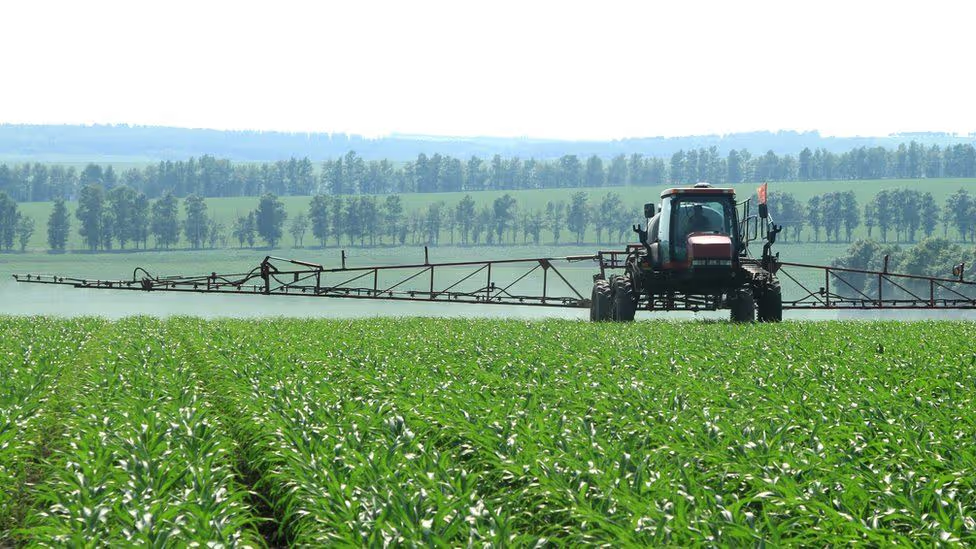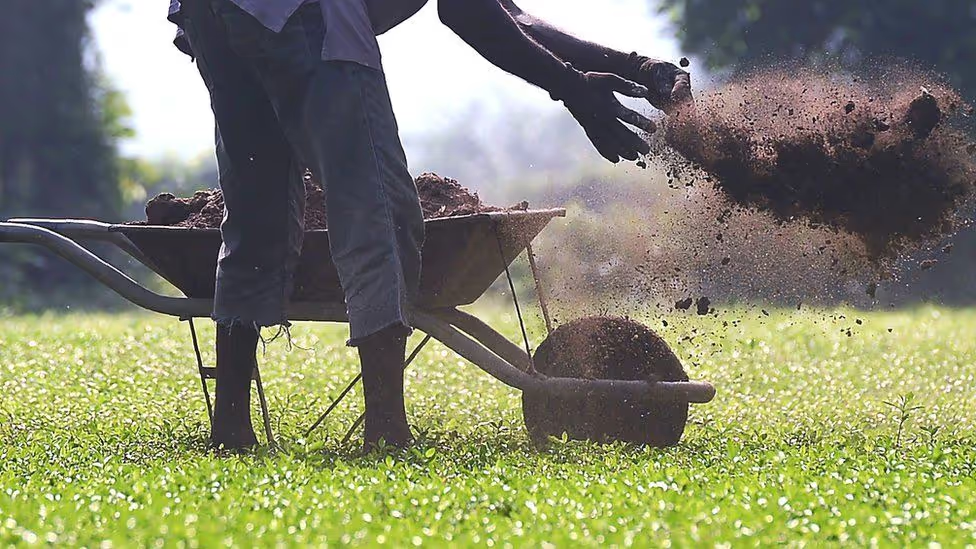.png)
Just ask Rachael Sharp, a third-generation farmer in the US state of South Carolina, who grows a varied mix of soybeans, corn, wheat, cotton, peanuts and oats.
She saw fertilizer prices for her crops soar 320% last year - the sharpest rise that she, or her father, can remember.
Ms Sharp says some of her fellow farmers aren't planting anything due to the excessive costs.
Around the world, prices of fertilizers have been breaking records over the past year, amidst extreme weather, transport disruptions, and now the Russian invasion of Ukraine.
Russia, which is contending with Western sanctions, produces large quantities of key chemicals used in the production of fertilizers. It also supplies much of the natural gas used to produce ammonia - a major component of nitrogen fertilizers.
The conflict is making other countries aware of their dependency on Russia for fertilizer. The US government has responded by investing in innovative, domestically made fertilizers, but it will take time for those investments to pay off.
Soaring prices are causing farmers to adjust their planting strategies. They're also driving interest in alternatives to conventional fertilizers.
Environmentalists have long-called for such a move. Producing traditional fertilizers is energy intensive, resulting in significant carbon dioxide (CO2) emissions.
But nitrogen fertilizers have a second sting. When they get into the environment they spur the production of nitrous oxide, a potent greenhouse gas.

One relatively straightforward measure would be cutting down on the amount of synthetic fertilizers used.
Fertilizer overuse is an enormous problem. It's been estimated that globally, crops use only 35% of the nitrogen and 56% of the phosphorus appliedto them; the remainder settles in the environment.
This varies widely, ofcourse. Low-income farmers may be grappling with too little fertilizer, not too much.
But overall, substantially more fertilizer is being added to fields than is needed -increasing costs and environmental damage.
Overuse "is a huge challenge in our field," says Bhupinder Farmaha, a nutrient management specialist at Clemson University in the US, as well as an agricultural extension agent who works with farmers like Ms Sharp.
Overuse is due in part to tradition, and in part to outdated recommendations for fertilizer application that does not take account of specific environmental conditions.

Sri Lanka came up with a radical solution to the problem: the government abruptly banned chemical fertilizers in April 2021.
Subsidies of chemical fertilizers had increased yields but also led to dependence and inefficient application.
The effects of the ban were catastrophic. Farmers who had depended on chemical fertilizers were suddenly scrambling for organic alternatives, with little time to prepare.
Very few Sri Lankan farmers were accustomed to organic fertilizers, which in any case were in short supply.
While the ban was eased in November 2021, Sri Lankan agriculture and the economy are still feeling the shocks.
Thank you, Christine Ro from Business of Technology reporter, for this insightful article
.png)
Contribute to your future, a Non Profit Organization and buy us a Coffee with 3 simple clicks and a minute of your time. Imagine what we can do together.
To thank you, we will call you personally.
This is the amount that will be distributed amongst the current shareholders.
Current Share Holders
1102/500,000